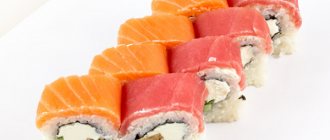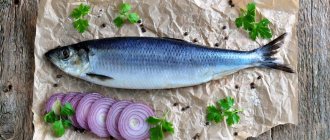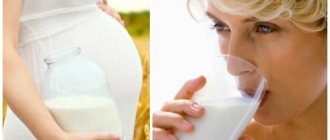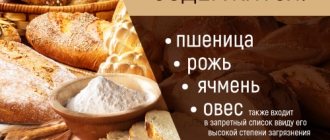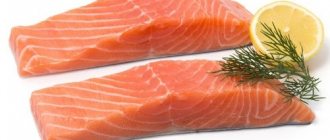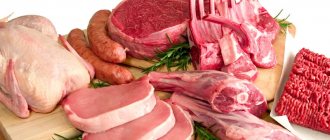Daily protein intake
Nutritionists recommend consuming 1 gram of protein per kilogram of weight for people who do not engage in sports or physical labor. This amount is enough to cover the protein needs of both men and women.
If you lead an active lifestyle and play sports, you need to increase your protein intake. The more intensely you train, the more of these foods you need to consume. For example, for those who engage in strength training, the daily protein intake is 1.3-1.6 grams per kilogram of body weight.
If your training goal is to reduce the percentage of body fat, in other words, to lose weight, then you need to consume 1.6-2 grams of protein per kilogram of weight. This will allow the body to maintain muscle while in a calorie deficit. Then weight loss will occur due to the loss of fat tissue, and not due to muscle burning.
Dairy
As high-protein food products, the main alternative to meat and fish are cheese, cottage cheese and other dairy products. For example, natural cottage cheese contains up to 15-20 g of protein per 100 g - a figure comparable to the protein content of meat.
Despite the fact that most types of cheese contain up to 20-30 g of protein per 100 g of product, their fat content is also high and reaches 20-30% - therefore cheese should be consumed in moderation. Rounding out the list of protein-rich foods is milk, which contains 2-5g of protein per 100g, or 7-12g of protein per large glass.
| The product's name | Protein content per 100 g | Approximate level of protein absorption |
| Hard cheese | 25 – 30 g | 90 – 95% |
| Soft cheese | 20 – 25 g | 90 – 95% |
| Powdered milk | 20 – 25 g | 90 – 95% |
| Dry cream | 20 – 25 g | 90 – 95% |
| Low-fat cottage cheese | 15 – 20 g | 90 – 95% |
| Brynza | 15 – 20 g | 90 – 95% |
| Regular cottage cheese | 10 – 15 g | 90 – 95% |
| Yogurt | 5 – 6 g | 90 – 95% |
| Ice cream | 3 – 5 g | 90 – 95% |
| Milk | 2 – 5 g | 90 – 95% |
Top 10 High Protein Foods
There are foods that contain a lot of protein, but they are difficult to include in the diet: for example, 100 grams of milk powder contains 33 grams of protein. But we cannot eat milk powder in such quantities, if only because health problems will arise.
That's why we've compiled a list of foods that are high in protein and can be eaten regularly. We give the amount of protein per 100 grams of product.
- Cheese – from 20 to 32 grams
- Chicken or turkey breast – 29 to 31 grams
- Cottage cheese – from 18 to 23 grams
- Legumes (lentils, peas, beans, chickpeas, peanuts) – from 20 to 23 grams
- Red meat (beef) – 21 grams
- Fish – from 14 to 21 grams
- Nuts (cashews, walnuts, pistachios) – from 15 to 21 grams
- Cereals (oats, buckwheat, millet) – from 10 to 15 grams
- Durum wheat pasta – 13 grams
- Egg – 13 grams
An additional source of protein is whey protein. They should not replace your regular diet, but if the food you eat does not provide the required amount, then a protein supplement may help.
Plant-based high protein foods (vegetables)
1 Broccoli
This variety of cabbage occupies a leading place in protein content among vegetables ( 100 g of cabbage contains 3 g of pure protein ), and it is also a storehouse of vitamins and minerals so necessary for our health - vitamins A, B, E, C, K, fiber , iodine, phosphorus and other trace elements.
Broccoli also contains bioactive nutrients that help fight cancer cells.
In addition, broccoli is low in calories: only 30 kcal per 100 g.
2 Brussels sprouts
This miniature cabbage contains a significant amount of high-quality and easily digestible protein ( about 4 g per 100 g of cabbage ).
It is also rich in fiber, vitamin C, phosphorus, and provitamin A.
Like most vegetables, it is low in calories, which allows it to fit perfectly into the diet of people trying to lose extra pounds. Nutritional value is 43 kcal per 100 g of product.
Proper distribution of protein foods throughout the day
There is an opinion that protein intake should be distributed evenly throughout the day, supposedly our stomach is not able to process more than 30 grams of protein at a time. However, scientists tend to argue that the situation with proteins is the same as with calories: it doesn’t matter what parts you consumed, the total daily volume is important.
This is how absorption happens. When a protein enters the stomach, under the influence of gastric juice it breaks down into its components - amino acids, or into peptides - compounds of amino acids. Next, the amino acids enter the intestines, where they are absorbed and transported into the blood. It is the rate of movement of amino acids into the blood that is the limiting factor in protein absorption.
But in such cases, the body uses a tool that regulates the speed of digestion - the hormone cholecystokinin. When there are more nutrients in the stomach than the intestines can absorb, this hormone is released. Digestion slows down and all protein is absorbed.
Therefore, you can safely eat all the protein at one time and not worry that it will not be absorbed. It is recommended to consume food in a mode in which you are comfortable: whether it is 5 meals a day or one. All that matters is compliance with the daily requirement, as well as the calorie intake, if your nutrition plan is aimed at changing weight.
Calculate how many calories you need to eat per day. We have made a convenient calculator
Protein is an important nutrient that needs to be monitored if you want to maintain and develop muscle mass and if your goal is to lose weight. To consume a lot of protein, you need to remember about familiar and easy-to-eat high-protein foods and try to include them in your daily diet.
Protein content in meat
Meat is a source of protein that is of animal origin, which means it contains a set of essential amino acids.
| Type of meat | Content per 100 grams, in grams |
| Beef (tenderloin) | 24 |
| Chicken (breast) | 31 |
| Turkey (breast) | 29 |
| Pork (tenderloin) | 26 |
| Lamb meat | 25 |
| Rabbit meat | 21 |
List of Protein Rich Foods
To correctly calculate the daily requirement, you need to know the amount of protein in each product. In addition, for optimal absorption, foods must be combined with each other. The best protein foods: meat, milk, eggs, cereals and nuts.
10 foods with the highest protein content
The top protein products with daily intake are presented in the table:
| Product type | Protein content (per 100 g) |
| Poultry meat | 17-22 |
| Pork, beef | 15-20 |
| Fish | 14-20 |
| Seafood | 15-18 |
| Legumes | 20-25 |
| Nuts | 15-30 |
| Eggs | 12 |
| Hard cheese | 25-27 |
| Cottage cheese | 14-18 |
| Cereals | 8-12 |
The protein content in food products is presented as an absolute value. But we must remember that these substances are not fully absorbed by the body.
Meat proteins
| Types of meat | Content g/100 g |
| Turkey | 21-22 |
| Chicken | 20-21 |
| Beef | 19 |
| Mutton | 16 |
| Pork | 11-16 |
Meat from rabbits, poultry and cattle is a protein-rich product. It is useful in any form, except fried. Pork should be eaten in moderation, as it contains fats. Before eating, you can cut off the fat, then the meat will be more dietary.
Beef contains slightly more protein than pork. The internal organs of animals (liver, tongue, etc.) are rich in microelements, so they should be included in the diet.
Fish and seafood proteins
| Fish and seafood | Content g/100 g |
| Pink salmon | 21 |
| Salmon | 20,8 |
| Squid, shrimp, mackerel | 18 |
| Herring | 17-18 |
| Crab, flounder, pollock | 16 |
| capelin | 13 |
Fish rich in protein: salmon, tuna, flounder, herring, trout. The most amino acids are found in caviar. In inexpensive varieties of fish, for example, capelin, caviar is not inferior in beneficial properties to sturgeon. In addition, seafood contains a lot of phosphorus.
Milk proteins
| Dairy | Content g/100 g |
| Cheese | 20-27 |
| Cottage cheese | 14-18 |
| Yogurt | 5 |
| Cream, kefir, sour cream | 2,8-3 |
| Milk | 2,8 |
Dairy products with the highest protein content: milk, cheese, cottage cheese and kefir. They contain calcium, which is necessary for the absorption of amino acids. Fermented milk products have a positive effect on intestinal microflora. In low-fat form, such food is indispensable for the diet.
Cereals
| Cereals | Content g/100 g |
| Hercules | 13 |
| Millet | 11,5 |
| Oatmeal, semolina | 11 |
| Buckwheat | 10,8 |
| Pearl barley | 9,3 |
| Rice | 7 |
Of the cereals, buckwheat is the most useful in this sense. These products are useful because they are almost 50% absorbed by the body. There is a lot of protein in oatmeal and pearl barley, and rice is 3 times inferior to buckwheat in terms of beneficial properties.
Protein content in fish
Fish is a good source of protein and can completely replace meat if you don't like it. In addition, red fish contains vitamin D.
| Fish | Content per 100 grams, in grams |
| Tuna | 24,4 |
| Pink salmon | 20,5 |
| Salmon | 20 |
| Herring | 19,1 |
| Halibut | 18,9 |
| Mackerel | 18 |
Protein digestibility coefficient
As mentioned above, digestibility is one of the main indicators of protein quality, which can vary among different food groups. Therefore, when choosing foods that contain a lot of protein, you should also take into account information about how much protein will be absorbed.
The table below shows products with a protein content above average and their digestibility coefficients (the amount of protein absorbed by the body per 100 grams of product).
Summary table of protein content in food products and its digestibility coefficient
| Product name | Digestibility coefficient |
| Caviar | 24 |
| Turkey meat | 23 |
| Sardine | 22 |
| Tuna | 21 |
| Hard cheeses | 21 |
| Chum salmon | 20 |
| Chicken meat | 17 |
| Pork liver | 17 |
| Beef | 15 |
| Beans | 15 |
| Soybeans | 15 |
| Peas | 15 |
Protein content of dairy products
Any dairy product is a source of protein and essential amino acids.
| Product | Content per 100 grams, in grams |
| Parmesan cheese | 35 |
| Cheese "Russian" 50% fat | 23 |
| Low-fat cottage cheese | 22 |
| Cottage cheese 9% fat | 18 |
| Milk 2.5% fat | 2,9 |
| Yogurt 6% fat | 5 |
High protein foods
All cells of the body are made of it, it is responsible for muscle growth and the feeling of satiety. This is the perfect tool for any purpose! It is very important to consume it in sufficient quantities, but we must not forget about diversity, since each type has its own amino acid composition. Find out which foods are high in protein and enrich your diet with something beyond chicken and protein powder with these great sources.
Eggs
6 g in 1 large egg
Egg whites are one of the most optimal sources of protein. Eggs are cheap, can be cooked in a variety of ways, are low-carb and rich in branched-chain amino acids (BCAAs). Opt for eggs with added Omega-3 fatty acids: they will make your morning scrambled eggs even more nutritious.
Hard-boiled eggs are the most convenient protein-enriched food that you can take with you everywhere. You can also replace whey protein with egg protein in shakes.
High protein dairy products
Greek yogurt
23 g by 227 g
Greek yogurt is notable for the fact that its protein content is almost twice as high as other yogurts. It is also rich in calcium, which promotes bone health, and probiotic bacteria, which normalizes intestinal function. Choose yogurt without fillers to control your sugar intake and your weight.
Cottage cheese
14 g per half cup
Eat cottage cheese at night as a healthy protein snack. It contains a lot of casein, a milk protein that takes longer to digest than whey. Slowly digesting protein supplies your muscles with nutrients throughout the night, preventing catabolism. Plus, you won't wake up hungry at 3 am.
Swiss cheese
8 g by 28 g
Swiss cheese saturates the body with protein like no other type of cheese. Therefore, it is impossible to think of a better muscle-forming component for sandwiches and burgers. Those who are worried about the calorie content of fatty types of Swiss cheese should pay attention to dietary ones: they contain only 1 g of fat per 8 g of protein, and they taste no worse.
2% milk
8 g per glass
You can choke on nasty, watery skim milk, or you can instead enjoy 2% fat milk with a rich flavor. The fat contained in milk will ensure better absorption of vitamin D and help achieve normal macronutrient levels.
Organic milk contains record levels of nutrients and Omega-3s. Dissolve protein powder in it and get a champion shake.
Whey or casein protein powders
on average 24 g in 1 scoop
Whey protein contains no impurities, is quickly digested, and almost all of its calories come from protein. It is easy to use: you just need to mix it with water in a shaker. Protein powder will help you out when you need to quickly eat a ready-made product with the highest amount of protein, for example, after completing a workout, having breakfast on the go, or when you eat low-protein foods.
To suppress hunger for a long time, replace whey with slow-digesting casein protein. Although it does not reach your muscles as quickly, casein powder will keep you full for a long time and help you burn fat without sacrificing muscle mass.
You can also use protein powder to make protein pancakes. If you're tired of shakes, eat these pancakes as a pre-workout or post-workout snack.
If you are sensitive to artificial sweeteners, look for a protein powder that is unsweetened or contains stevia.
Smoothie
average 16 g per glass
Give your regular protein shake a boost of vitamins by pairing casein or whey protein with fruit. You can also buy ready-made smoothie drinks, but make sure they contain enough protein (at least 20g per 300-400ml bottle) and not just fruit, otherwise you will end up with extra sugar.
To make a plant-based smoothie, use vegan protein powder instead of casein and whey, which contain animal proteins. A mix of rice and pea proteins perfectly stimulates muscle growth.
Frozen Greek yogurt
6 g per half cup
Frozen Greek yogurt has a crunchy, creamy consistency similar to ice cream. But at the same time, it contains almost twice as much quality protein. Compare products from different brands, and look for yogurt with the least amount of sugar (or make your own). Some manufacturers list fruit first and then sugar, which is actually a big plus.
Protein content of legumes
Legumes are one of the best foods that can provide a source of protein for vegetarians and vegans. But in some cases, legumes can be harmful - for people with gastrointestinal diseases, gout and allergies to legumes.
| Legumes | Content per 100 grams, in grams |
| Soybeans | 36 |
| Red beans | 24 |
| Mash | 24 |
| Green lentils | 22 |
| Peas | 20 |
| Chickpeas | 19 |
Protein content in animal products
Table of protein content in products from the category - products of animal origin. The chart shows the percentage of protein from the daily requirement, calculated based on a 100 g portion of the product.
| № | Amount of protein | Share of daily value per 100 g | |
| 1 | Chicken egg white powder | 81.1 g | 108,1% |
| 2 | Whey protein powder | 78.1 g | 104,2% |
| 3 | Powdered egg replacers | 55.5 g | 74,0% |
| 4 | Milk Protein Supplement Powder | 50.0 g | 66,7% |
| 5 | Parmesan cheese | 35.8 g | 47,7% |
| 6 | Beaver meat cooked | 34.9 g | 46,5% |
| 7 | Chicken egg yolk in powder form | 33.6 g | 44,8% |
| 8 | Cooked cuttlefish | 32.5 g | 43,3% |
| 9 | Cooked bear meat | 32.4 g | 43,2% |
| 10 | Cooked pheasant | 32.4 g | 43,2% |
| 11 | Veal cooked | 31.9 g | 42,5% |
| 12 | Pecorino Romano cheese | 31.8 g | 42,4% |
| 13 | Cooked beefalo meat | 30.7 g | 40,9% |
| 14 | Fried chicken | 30.6 g | 40,8% |
| 15 | Baked chicken breast (skinless) | 30.5 g | 40,7% |
| 16 | Venison cooked | 30.2 g | 40,3% |
| 17 | Cooked elk meat | 30.2 g | 40,3% |
| 18 | Boiled turkey breast (fillet) | 30.1 g | 40,2% |
| 19 | Baked turkey drumstick (without skin) | 30.1 g | 40,2% |
| 20 | Cooked beef (meat without fat) | 29.9 g | 39,9% |
| 21 | Boiled octopus | 29.8 g | 39,8% |
| 22 | Gruyère cheese | 29.8 g | 39,7% |
| 23 | Baked Yellowtail (Lacedra) | 29.7 g | 39,6% |
| 24 | Cooked pork fillet | 29.5 g | 39,3% |
| 25 | Antelope meat cooked | 29.5 g | 39,3% |
| 26 | Beef liver, stewed or fried | 29.1 g | 38,8% |
| 27 | Cooked rabbit meat | 29.1 g | 38,7% |
| 28 | Canned anchovies (in oil) | 28.9 g | 38,5% |
| 29 | Roasted turkey (meat and skin of the whole carcass) | 28.6 g | 38,1% |
| 30 | Pork pancreas, cooked | 28.5 g | 38,0% |
| 31 | Boiled beef heart | 28.5 g | 38,0% |
| 32 | Cooked wild boar meat | 28.3 g | 37,7% |
| 33 | Pork spleen cooked | 28.2 g | 37,6% |
| 34 | Cooked lamb | 28.2 g | 37,6% |
| 35 | Cooked horse meat | 28.1 g | 37,5% |
| 36 | Baked turkey thigh (fillet) | 27.7 g | 36,9% |
| 37 | Boiled beef kidneys | 27.3 g | 36,4% |
| 38 | Baked pork loin | 27.2 g | 36,3% |
| 39 | Cooked goat meat | 27.1 g | 36,1% |
| 40 | Stewed turkey liver | 27.0 g | 36,0% |
| 41 | Swiss cheese | 27.0 g | 35,9% |
| 42 | Baked trout | 26.6 g | 35,5% |
| 43 | Baked sockeye salmon | 26.5 g | 35,3% |
| 44 | Cooked chicken hearts | 26.4 g | 35,2% |
| 45 | Baked milkfish (hanos) | 26.3 g | 35,1% |
| 46 | Powdered milk | 26.3 g | 35,1% |
| 47 | Baked tilapia | 26.2 g | 34,9% |
| 48 | Pork liver fried or stewed | 26.0 g | 34,7% |
| 49 | Baked chum salmon | 25.8 g | 34,4% |
| 50 | Fried chicken liver | 25.8 g | 34,4% |
| 51 | Baked chinook salmon | 25.7 g | 34,3% |
| 52 | Cheese Fontina | 25.6 g | 34,1% |
| 53 | Provolone cheese | 25.6 g | 34,1% |
| 54 | Boiled shellfish | 25.6 g | 34,1% |
| 55 | Bison meat cooked | 25.5 g | 33,9% |
| 56 | Baked salmon | 25.4 g | 33,9% |
| 57 | Stewed pork kidneys | 25.4 g | 33,9% |
| 58 | Baked goose | 25.2 g | 33,5% |
| 59 | Edam cheese | 25.0 g | 33,3% |
| 60 | Gouda cheese | 24.9 g | 33,3% |
| 61 | Baked pollock | 24.9 g | 33,2% |
| 62 | Baked grouper | 24.8 g | 33,1% |
| 63 | Baked burbot | 24.8 g | 33,0% |
| 64 | Cooked pike | 24.7 g | 32,9% |
| 65 | Canned sardine in oil | 24.6 g | 32,8% |
| 66 | Baked pink salmon | 24.6 g | 32,8% |
| 67 | Baked pike perch | 24.5 g | 32,7% |
| 68 | Monterey cheese | 24.5 g | 32,6% |
| 69 | Cheese Tilsiter | 24.4 g | 32,5% |
| 70 | Molva baked | 24.4 g | 32,5% |
| 71 | Baked menek | 24.4 g | 32,5% |
| 72 | Baked river perch | 24.2 g | 32,2% |
| 73 | Boiled pork tongue | 24.1 g | 32,1% |
| 74 | Baked chicken legs (meat with skin) | 24.0 g | 32,0% |
| 75 | Boiled shrimp | 24.0 g | 32,0% |
| 76 | Baked mackerel | 23.9 g | 31,8% |
| 77 | Boiled mussels | 23.8 g | 31,7% |
| 78 | Cheese Port-Salut | 23.8 g | 31,7% |
| 79 | Colby cheese | 23.8 g | 31,7% |
| 80 | Mozzarella cheese | 23.8 g | 31,7% |
| 81 | Mahi-mahi (korifena) baked | 23.7 g | 31,6% |
| 82 | Baked or smoked eel | 23.7 g | 31,5% |
| 83 | Baked seabass | 23.6 g | 31,5% |
| 84 | Boiled or stewed pork heart | 23.6 g | 31,5% |
| 85 | Duck (duck meat) baked (meat without skin) | 23.5 g | 31,3% |
| 86 | Baked whiting | 23.5 g | 31,3% |
| 87 | Baked coho salmon | 23.5 g | 31,3% |
| 88 | Baked swordfish | 23.5 g | 31,3% |
| 89 | Munster cheese | 23.4 g | 31,2% |
| 90 | Cheshire cheese | 23.4 g | 31,2% |
| 91 | Canned horse mackerel | 23.2 g | 30,9% |
| 92 | Baked herring | 23.0 g | 30,7% |
| 93 | Cheddar cheese | 22.9 g | 30,5% |
| 94 | Baked carp | 22.9 g | 30,5% |
| 95 | Baked Terpug | 22.6 g | 30,2% |
| 96 | Fried smelt | 22.6 g | 30,1% |
| 97 | Mexican cheese Oaxaca | 22.6 g | 30,1% |
| 98 | Baked halibut | 22.5 g | 30,1% |
| 99 | Baked catfish | 22.4 g | 29,9% |
| 100 | Caviar, red or black, raw | 22.3 g | 29,8% |
| 101 | Smoked butterfish (escolar) | 22.2 g | 29,5% |
| 102 | Raw ostrich meat, tenderloin | 22.1 g | 29,4% |
| 103 | Boiled pork legs | 21.9 g | 29,3% |
| 104 | Goat cheese | 21.6 g | 28,8% |
| 105 | Mexican Cheese Queso Chihuahua | 21.6 g | 28,7% |
| 106 | Roquefort cheese | 21.5 g | 28,7% |
| 107 | Mexican cheese Anejo | 21.4 g | 28,6% |
| 108 | Boiled pork stomach | 21.4 g | 28,5% |
| 109 | Blue cheeses | 21.4 g | 28,5% |
| 110 | Brie cheese | 20.8 g | 27,7% |
| 111 | Baked sturgeon | 20.7 g | 27,6% |
| 112 | Cooked scallop | 20.5 g | 27,4% |
| 113 | Baked cod | 20.4 g | 27,2% |
| 114 | Light beef boiled or stewed | 20.4 g | 27,2% |
| 115 | Cheese Limburger | 20.1 g | 26,7% |
| 116 | Mexican Cotija cheese | 20.0 g | 26,7% |
| 117 | Camembert cheese | 19.8 g | 26,4% |
| 118 | Abalone cooked | 19.6 g | 26,2% |
| 119 | Tuna canned in its own juice | 19.4 g | 25,9% |
| 120 | Boiled beef tongue | 19.3 g | 25,7% |
| 121 | Lobsters (lobsters, spiny lobsters) boiled | 19.0 g | 25,3% |
| 122 | Duck liver raw | 18.7 g | 25,0% |
| 123 | Fried shark meat | 18.6 g | 24,8% |
| 124 | Cooked monkfish | 18.6 g | 24,7% |
| 125 | Sea bass (red) baked | 18.5 g | 24,7% |
| 126 | Fried catfish | 18.5 g | 24,6% |
| 127 | Fried croaker | 18.2 g | 24,3% |
| 128 | Cheese Queso Fresco | 18.1 g | 24,1% |
| 129 | Cooked squid (fried) | 17.9 g | 23,9% |
| 130 | Boiled crab | 17.9 g | 23,8% |
| 131 | Cooked pork tail | 17.0 g | 22,7% |
| 132 | Boiled crayfish | 16.8 g | 22,4% |
| 133 | Boiled pork lung | 16.6 g | 22,1% |
| 134 | Frog legs raw | 16.4 g | 21,9% |
| 135 | Raw goose liver | 16.4 g | 21,8% |
| 136 | Baked omul | 16.4 g | 21,8% |
| 137 | Raw snails | 16.1 g | 21,5% |
| 138 | Boiled pig ears | 16.0 g | 21,3% |
| 139 | Raw egg yolk | 15.9 g | 21,1% |
| 140 | Philadelphia cheese | 15.7 g | 20,9% |
| 141 | Fried flounder | 15.2 g | 20,3% |
| 142 | Chees Feta | 14.2 g | 18,9% |
| 143 | Raw goose egg | 13.9 g | 18,5% |
| 144 | Turkey egg raw | 13.7 g | 18,2% |
| 145 | Raw quail egg | 13.1 g | 17,4% |
| 146 | Raw duck egg | 12.8 g | 17,1% |
| 147 | Boiled chicken egg (hard-boiled) | 12.6 g | 16,8% |
| 148 | Beef brain fried | 12.6 g | 16,8% |
| 149 | Raw chicken egg | 12.6 g | 16,7% |
| 150 | Pork intestines cooked | 12.5 g | 16,7% |
| 151 | Pork brain cooked | 12.1 g | 16,2% |
| 152 | Boiled beef tripe | 11.7 g | 15,6% |
| 153 | Foie gras canned | 11.4 g | 15,2% |
| 154 | Ricotta cheese | 11.4 g | 15,2% |
| 155 | Raw egg white | 10.9 g | 14,5% |
| 156 | Cottage cheese 2% fat | 10.5 g | 13,9% |
| 157 | Cheese Brunust | 9.7 g | 12,9% |
| 158 | Cheese Neuchatel | 9.2 g | 12,2% |
| 159 | Baked oysters | 8.9 g | 11,8% |
| 160 | Condensed milk | 7.9 g | 10,5% |
| 161 | Cream cheese | 6.2 g | 8,2% |
| 162 | Sheep milk | 6.0 g | 8,0% |
| 163 | Dried jellyfish | 5.5 g | 7,3% |
| 164 | Kefir | 3.8 g | 5,1% |
| 165 | Goat milk | 3.6 g | 4,7% |
| 166 | Sour cream | 3.5 g | 4,7% |
| 167 | Cow's milk 2% fat | 3.3 g | 4,4% |
| 168 | Whole cow's milk 3.7% fat | 3.3 g | 4,4% |
| 169 | Ryazhenka | 3.2 g | 4,3% |
| 170 | Swept fat-free | 3.1 g | 4,1% |
| 171 | Milk serum | 0.8 g | 1,0% |
| 172 | Butter | 0.3 g | 0,4% |
| 173 | Rendered pork lard (lard) | 0.1 g | 0,1% |
| 174 | Raw beef fat | 0.0 g | 0,0% |
| 175 | Raw goose fat | 0.0 g | 0,0% |
| 176 | Turkey fat, raw | 0.0 g | 0,0% |
| 177 | Raw sardine fat | 0.0 g | 0,0% |
| 178 | Pork fat (pork fat), raw | 0.0 g | 0,0% |
| 179 | Raw herring fat | 0.0 g | 0,0% |
| 180 | Raw chicken fat | 0.0 g | 0,0% |
| 181 | Raw lamb fat | 0.0 g | 0,0% |
| 182 | Salmon oil raw | 0.0 g | 0,0% |
| 183 | Cod liver oil, raw | 0.0 g | 0,0% |
| 184 | Duck fat raw | 0.0 g | 0,0% |
Protein content of nuts
Nuts are a source of protein and vitamins. They contain vitamins A, B, C, D and E. Read more in our article “Nuts are very healthy. They contain vitamins and fats, make athletes more resilient and help restore muscles.”
| Nuts | Content per 100 grams, in grams |
| Almond | 21 |
| Pistachios | 21 |
| Cashew | 18 |
| Gretsky | 15 |
| Hazelnut | 13 |
Fish and seafood containing large quantities of protein
Any fish is a source of protein and other healthy products. At the same time, the calorie content of fish meat is lower than that of chicken and beef. Sea fish is especially useful, as it contains Omega-3 fatty acids - essential substances for the functioning of the brain and nervous system. It is important to know that Omega-3 is only found in fish caught in free water.
Tuna
Among all types of fish, tuna stands out favorably. Its meat consists almost entirely of protein: 29 grams of protein per 100 grams and has an energy value of only 96 kcal, containing only 5 grams of fat .
Shrimps
A tasty, healthy seafood product containing 18% protein and only 84 kcal per 100 grams . Seafood is unique in that it grows in a natural wild environment and absorbs a large amount of substances valuable to humans. Shrimp contain Omega-3, a large amount of vitamin B12, necessary for the healthy functioning of all human organs. Sea water saturates shrimp with iodine, which is so necessary for the functioning of the thyroid gland.
| 100 grams of boiled product | B | AND | Kcal |
| Pink salmon | 22,9 | 7,8 | 168 |
| crucian carp | 20,7 | 2,1 | 102 |
| Bream | 20,9 | 4,7 | 126 |
| Salaka | 22 | 7,2 | 153 |
Protein content of fruits and vegetables
Any fruit or vegetable is not the richest product in proteins (but vegetables have other benefits - read more here).
| Product | Content per 100 grams, in grams |
| Green peas | 5 |
| Brussels sprouts | 4,8 |
| Kohlrabi cabbage | 2,8 |
| Bananas | 1,5 |
| Oranges | 0,9 |
| Apples | 0,5 |
More about training, nutrition, sports medicine and sports as an activity - in the “Health” section
Subscribe to the Sports.ru telegram channel about health
Photo: pexels.com/Engin Akyurt, Daria Shevtsova; unsplash.com/Maksim Shutov
Protein content in different food groups
To properly plan your daily diet, you need to know the protein content in different food groups.
Protein content in animal and plant products
| Meat | Meat contains (depending on the type of animal) from 15 to 21 g of protein per 100 g of product. Rabbit meat is the richest in proteins (21.1 g), followed by beef and horse meat (about 19 g). Pork contains the least protein (from 11 to 14 g) |
| Bird | Among poultry, turkey (19 g per 100 product) and chicken (about 18 g) are richest in protein. Geese and duck meat contains 14-15 g of protein. |
| Eggs | Chicken eggs contain less protein than meat - about 13 g per 100 g of product. But egg white is absorbed by the body almost completely - 90%. |
| Fish and fish products | Salmon and sturgeon caviar is a rich source of protein. Chum salmon caviar contains 31 g, and sturgeon caviar – 28 g of protein substances per 100 g of product. Mackerel, mackerel, flounder contain about 18.5 g of protein per 100 g. River fish (pike, crucian carp) - an average of 17 g. |
| Dairy | Those who make up for the lack of animal proteins through fermented milk products should pay attention to cottage cheese and hard cheeses. The content of protein substances in cottage cheese is about 17 g per 100 g, and in hard cheeses it can reach up to 29 g. While milk, kefir, and yogurt contain only 3 g of proteins per 100 g. |
| Legumes | Soy is the “champion” among all products in terms of protein content. There are 34 g of protein per 100 g of soybeans. There are slightly less proteins in lentils (24 g) and peas (23 g). Beans contain 22 g of protein per 100 g of product. |
| Nuts and seeds | Peanuts contain 26 g of protein per 100 g, sunflower seeds - 21 g, almonds and cashews - about 18 g, walnuts - 13.5 g. |
| Cereals | The most protein is in rolled oats (13 g) and buckwheat (12.6 g). Millet contains 12 g of protein, semolina - about 10 g. Rice cereal contains 7 g of protein substances per 100 g of product. |
Fruits and vegetables contain about 2 g of protein per 100 g of product. Garlic (6.5 g), Brussels sprouts (4.2 g), and mushrooms (about 4 g) are high in protein.
